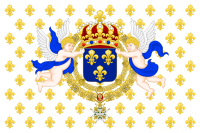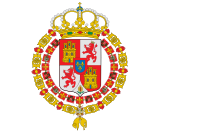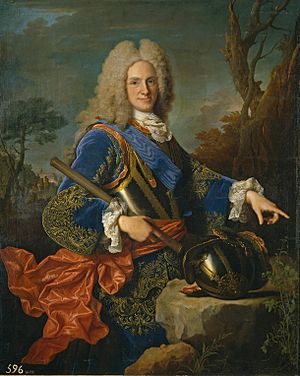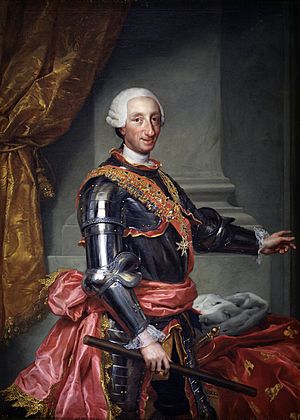Pacte de Famille facts for kids
| Foreign alliances of France | |||||||||||||||||||||||||||||||||||||||||||||||||||||||||||
|---|---|---|---|---|---|---|---|---|---|---|---|---|---|---|---|---|---|---|---|---|---|---|---|---|---|---|---|---|---|---|---|---|---|---|---|---|---|---|---|---|---|---|---|---|---|---|---|---|---|---|---|---|---|---|---|---|---|---|---|
|
|||||||||||||||||||||||||||||||||||||||||||||||||||||||||||
The Pacte de Famille (which means Family Compact in French) was a special agreement. It was one of three similar alliances between the kings of France and Spain. These kings were all from the same family, the House of Bourbon.
After a big war called the War of the Spanish Succession, the Bourbon family from France also became kings of Spain. To make sure France and Spain didn't become one country, they made these agreements. They decided to work together on certain things, but stay separate countries.
Contents
The First Family Compact: 1733
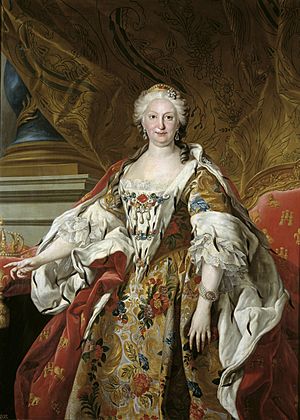
The first Family Compact was signed on November 7, 1733. It was an agreement between Philip V of Spain and his nephew, Louis XV of France. This happened with the Treaty of the Escorial.
A war had been fought to stop France and Spain from joining under one ruler. So, even though they were family, they had been enemies in another war (the War of the Quadruple Alliance). But in 1726, a French leader named Cardinal Fleury wanted France and Spain to be closer friends. It helped that Louis XV had a son in 1729, which meant the two kingdoms would likely stay separate.
Louis XV's wife, Maria Leszczyńska, was the daughter of Stanisław Leszczyński. Stanisław used to be the King of Poland but lost his throne. When the new Polish king died, Louis saw a chance to help his father-in-law get his throne back. This would also make Austria weaker.
Meanwhile, Philip V of Spain was married to his second wife, Elisabeth Farnese. She really wanted to get back Spanish lands in Naples and Sicily. These lands had been given to Austria in 1714. Elisabeth wanted her oldest son, Charles, to have lands to rule. Charles was unlikely to become king of Spain because he had older half-brothers. Elisabeth was very determined and pushed her husband to get these lands for Charles.
Spain and France agreed that Naples, Sicily, and other Italian areas would go to Spain for Charles. France also promised to help Spain if Britain attacked Spain's trade. In return, France got important trading rights with Spain. Spain's empire in Spanish America was rich in silver and a great market for goods. This agreement led them to join the War of the Polish Succession in 1733.
In the treaty, France also agreed to help Spain get back Gibraltar. Britain had captured Gibraltar during the War of the Spanish Succession. Spain, in turn, agreed to stop giving special trade deals to Britain. These promises weren't fully kept right away. But the tensions led to other conflicts later, like the War of Jenkins' Ear. Even though Stanisław didn't get his Polish throne back, France gained a strategic area called the Duchy of Lorraine. Philip V successfully got Naples and Sicily back for his son Charles.
The Second Family Compact: 1743
The second Family Compact was signed on October 25, 1743. Again, it was between King Philip V of Spain and King Louis XV of France. This agreement was called the Treaty of Fontainebleau.
This pact was made in the middle of the War of Austrian Succession. Many of its rules were about how to fight that war. Queen Elisabeth Farnese again wanted Spain to gain more land in Italy. This time, it was for her second son, Philip. Spain sent armies to Italy and helped France fight Austria.
Louis XV wanted Spain to be a strong ally for France. Louis promised that Charles would remain king of Naples and Sicily. He also wanted Philip to become the ruler of Milan. Spain gained a lot from this agreement, and so did France. Britain became worried about this stronger alliance between the Bourbon kings.
As a result, Spain's power in Italy grew. Philip V's fourth son, Philip, became the Duke of Parma, Piacenza and Guastalla in 1748.
The Third Family Compact: 1761
The third Family Compact was signed on August 15, 1761. It was between King Charles III of Spain and Louis XV. This happened during the Seven Years' War, which France was already fighting. Spain had not joined the war yet.
Charles III was the son of Philip V, making him Louis XV's first cousin. Charles's decision to join the alliance changed Spain's previous policy. His half-brother, Ferdinand VI, who was king before him, wanted Spain to stay out of the war. When Ferdinand died in 1759, Charles became king of Spain. He had already ruled Naples and Sicily for almost 25 years.
The Seven Years' War was not going well for France. So, the French leader, Etienne François, duc de Choiseul, tried two things. He wanted to bring Spain into a third family pact. Or, he wanted to make peace with Britain. Charles III was worried about his empire's lands overseas. He also feared that France might make a peace deal with Britain that would hurt Spain's interests.
A formal alliance would stop France from making peace alone. So, Charles chose to ally with France. The two Bourbon kingdoms agreed to deal with Britain together. The pact was set to start after Spain's yearly silver fleet arrived safely. This was a signal to the British that Spain planned to join the war. The agreement also included Spain's allies, Naples and Parma.
For Spain, the third pact was a big disaster. It didn't help France much. In 1762, the British captured two very important trading ports for the Spanish Empire: Havana in Cuba and Manila in the Philippines. These British victories hurt Spain's trade routes across the Atlantic and Pacific oceans.
Even worse, Spain agreed to attack Britain's old ally, Portugal. Spain invaded Portugal in 1762 with a large army. But Portuguese troops, helped by a strong British force, defeated the Spanish and French. They lost many soldiers.
With the war lost, France gave the rest of Louisiana to Spain as a secret deal. This happened in the Treaty of Fontainebleau. At the Treaty of Paris the next year, Charles III got Havana and Manila back. But he had to give all of Florida to the British. Florida was a very important strategic location.
Later Agreements Between France and Spain
- On April 12, 1779, France and Spain signed the Treaty of Aranjuez (1779). With this, Spain joined France in a war against Great Britain. They wanted to get back lands they had lost in earlier treaties. Spain especially wanted to get back Gibraltar. This treaty was seen as a continuation of the third Family Compact. So, it wasn't called the fourth Pacte de Famille.
- In August 1796, Manuel Godoy, a top minister for Charles IV of Spain, signed the Second Treaty of San Ildefonso with France. This treaty made Spain declare war on Great Britain. This agreement cannot be called a Family Compact. This is because the French Bourbon kings had either left France or been killed during the French Revolution.
See Also
- Precedence among European monarchies


